Interiors and Exteriors
French Box Design
The French ébénistes (cabinetmakers) enjoyed a reputation for the artistic and decorative expression they applied to their box manufacture; this being amplified, in the opinion of some, when compared to their more ‘reserved’ British counterparts. READ MORE
Maker’s and Retailer’s Marks
For the purposes of identification, advertising and acknowledgement, many boxes would bear the ‘marks’ of their maker’s and retailer’s. Their names, business addresses and details could be engraved or stamped into small brass plates or locks, gold-tooled and embossed into leather or velvet, engraved into wood or ivory plaques, or printed onto paper labels.
Velvet
Although documented as far back as the 8th century, velvet wasn’t introduced to Great Britain until the late 13th century.
Synonymous with royalty, nobility and the affluent, velvet was an expensive and highly desirable material due to its luxurious appearance, ability to absorb vibrant colour dyes, and its complication of manufacture. READ MORE
Morocco Leather
Morocco leather was considered one of the finest varieties of leather due to its suppleness and softness, as well as its strength and resilience. Initially sourced from Moroccan goatskin, later sources, whilst often still being referred to as ‘Morocco’ leather, also came from North African sheepskin and split calfskin. READ MORE
Monograms, Crests and Emblems
Monograms
A monogram is a group of two or more letters, overlapping or intertwining one another to form a design or symbol. They usually represented the initials of the family’s or individual’s name. READ MORE
Mirrors
The inclusion of mirrors in dressing cases was almost a prerequisite. Removable mirrors would be stowed in the lid of the box and with some having their own fold out stands, could be placed on a dressing table or other surface. READ MORE
Moiré silk
This is an effect created during the finishing of the silk material called Calendering. This involves folding the silk material and passing it under rollers at high temperatures and pressures. The result is an attractive wavy, watermarked patterning to the silk. READ MORE
Exterior and Interior Design
With most earlier box makers often keeping to more conventional box opening designs, the Victorian makers started to think more creatively regarding this. With style, practicality, space maximization and indeed status in mind, these Victorian box makers began to make significant changes to the more standard box form that most people had been accustomed to for millenniums. READ MORE
Cross-Banding
Cross-banding is the process of creating a border of veneer with its grain running at right angles to the grain of the adjoining veneer. READ MORE
Brass Handles
Whether it was country to country, city to city or just room to room, some of these boxes, often being heavy, needed to be carried easily and safely during travel. Taking influence from the campaign furniture of the time, makers would fit brass side or top handles to these boxes. READ MORE
Crowns and Coronets
Crowns are a symbol of monarchy, representing Kings and Queens, Princes and Princesses, and Dukes and Duchesses. A Coronet is another type of crown, but is reserved for the lower ranks of nobility like Marquesses and Marchionesses, Earls and Countesses, Barons and Baronesses, and some Lords and Ladys.
The specific design and attributes of the crown or coronet signifies the hierarchy and ranking of its owner. Denotations of ‘strawberry leaves’ and ‘pearls’ are used in differentiating the ranks of the Peerage.
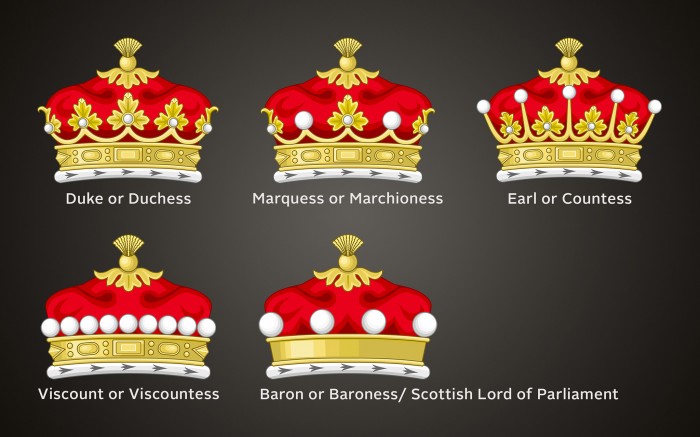
British crown and coronet nobility rankings in hierarchical order.
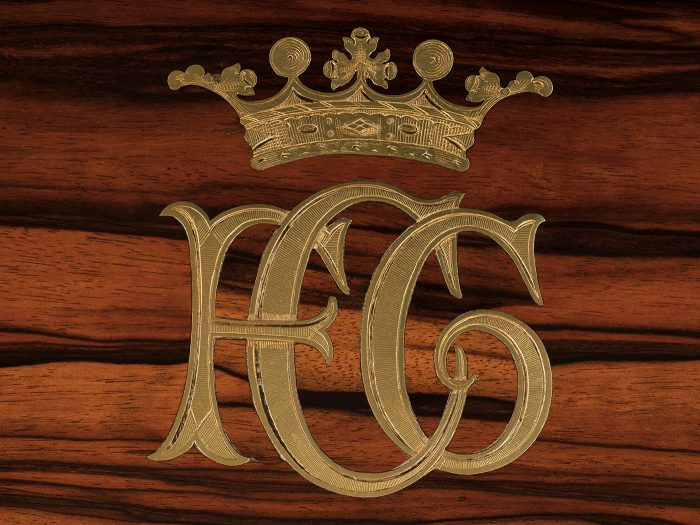
A marquess or marchioness’ coronet.
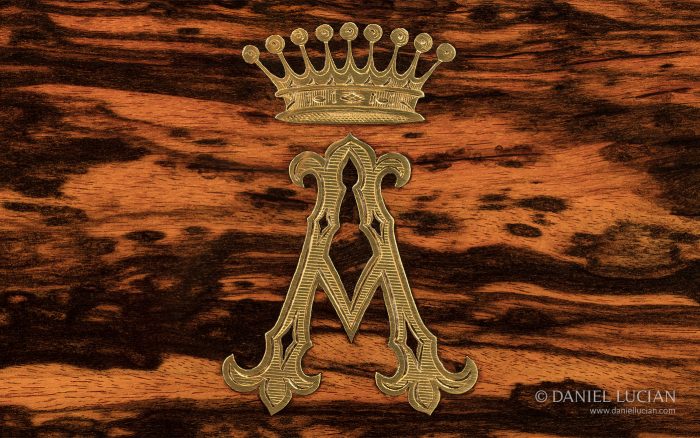
A viscountess’ coronet above an ‘M.A’ monogram belonging to Viscountess Marian Alford.
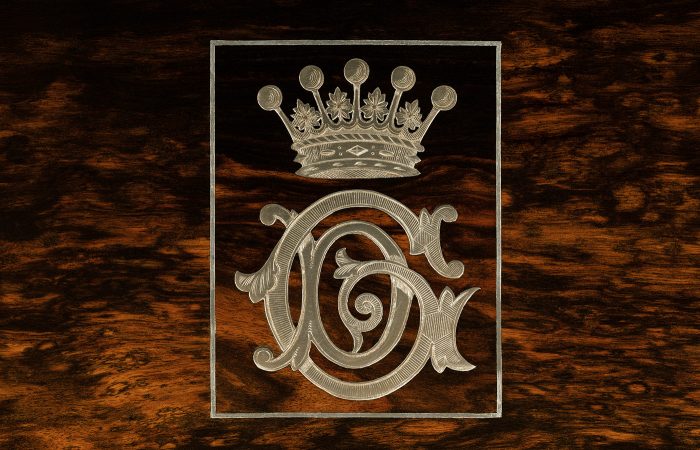
An earl or countess’ coronet.
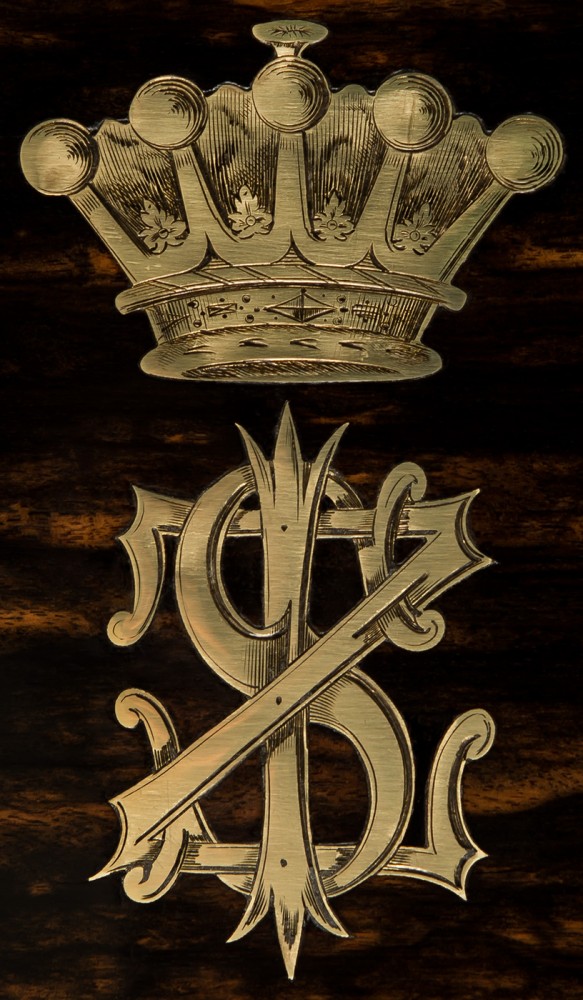
An earl or countess’ coronet.
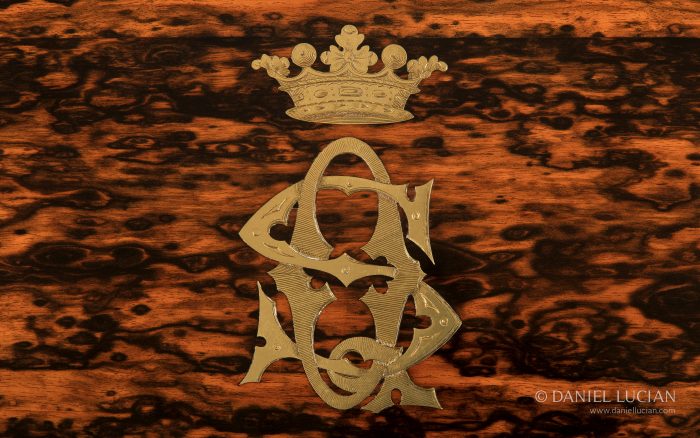
A marchioness’ coronet above an ‘S.Q’ monogram belonging to the Marchioness of Queensberry.
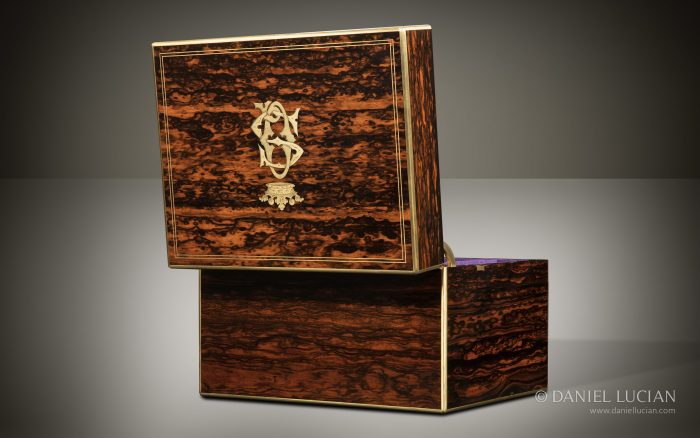
Antique Jewellery Box in Coromandel, Retailed by C.F. Hancock – A Wedding Present from the Marquess of Queensberry to the Marchioness of Queensberry.
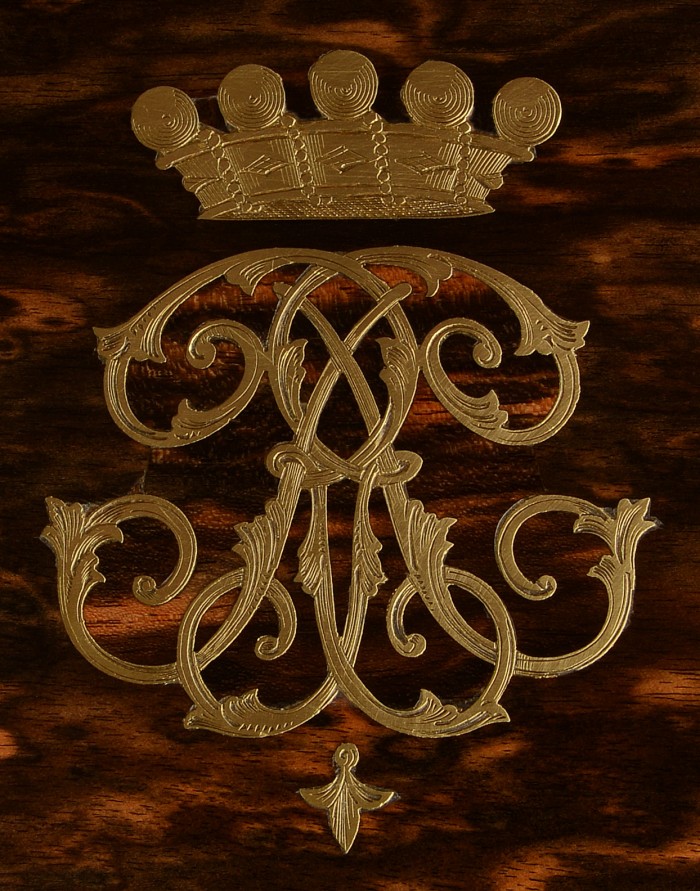
Coronet and monogram belonging to Baroness Rothschild.
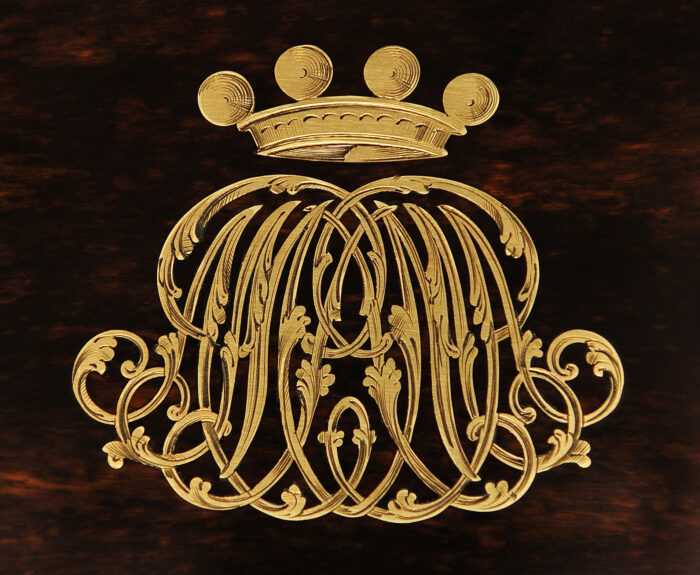
A baron or baroness’ coronet.
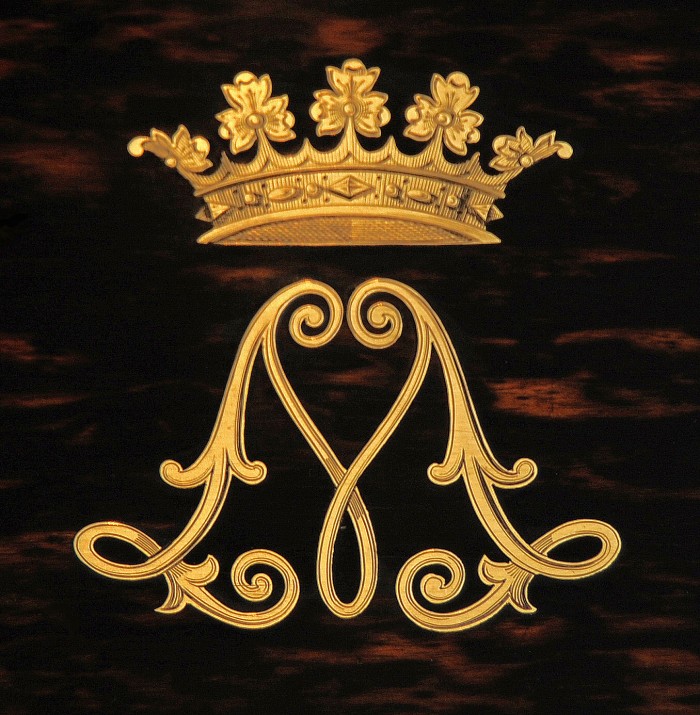
A duke or duchess’ crown.
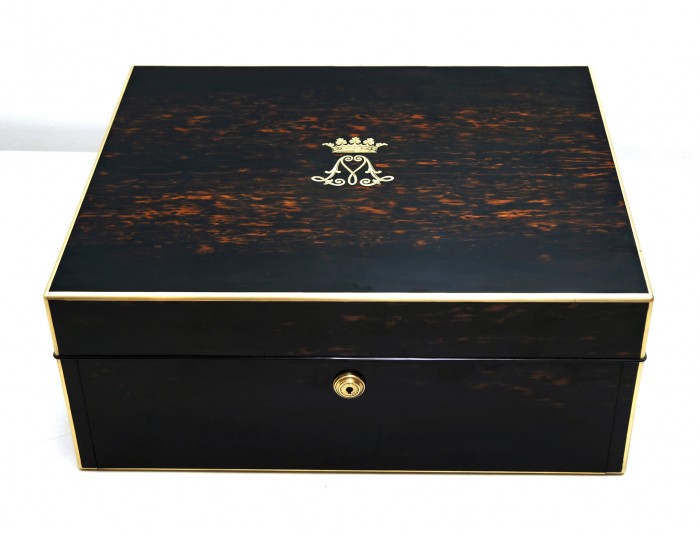
Asprey coromandel box with an inlaid duke or duchess’ crown.
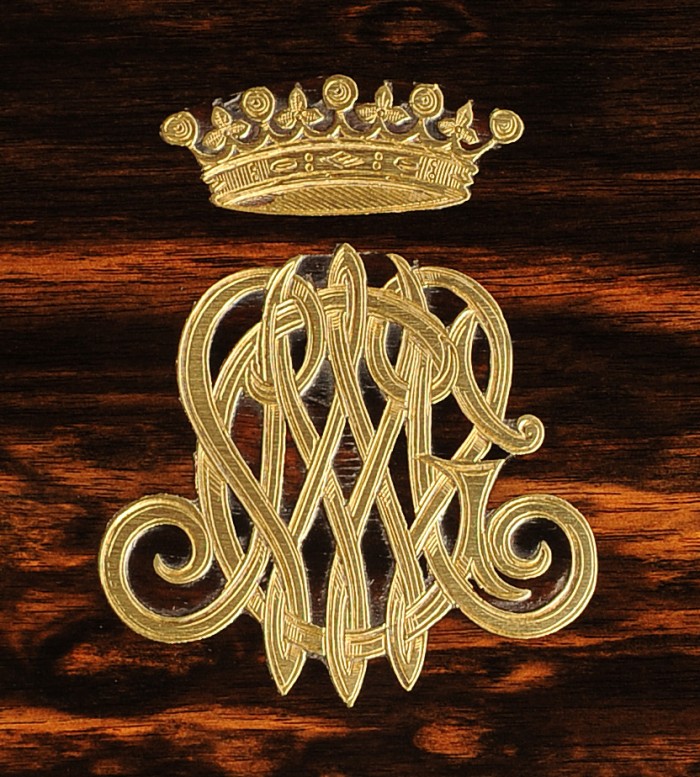
Coronet belonging to Mary Constance Wyndham, Countess of Wemyss.
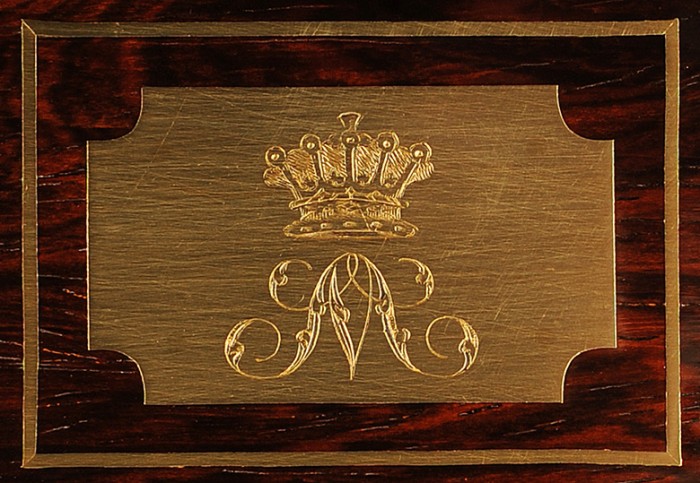
An earl or countess’ coronet.
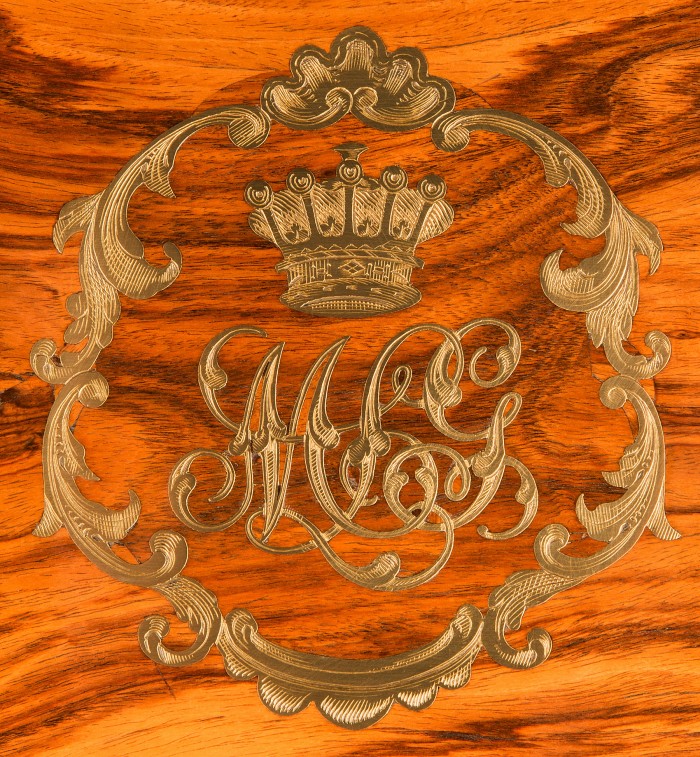
An earl or countess’ coronet.
Escutcheons
Escutcheons are usually shaped plates, often made from brass, that can either surround a keyhole or be inlaid into the top of the lid. READ MORE
Brass Hinges
Brass hinges were used to connect the lid to the main part of the box. There were countless styles of brass hinge, and the type chosen by the box maker would reflect practicality and design. READ MORE
Brass Inlay
During the Regency period it was very much the height of opulence to inlay delicately shaped pieces of brass design into wood.
Inspired from the French Napoleonic style, this art form was only attained by the most skilled and patient craftsman. READ MORE
Brass Corner Mounts
These were often sculpted right angle shaped pieces of brass that were inlaid into the corners of the interior rims of the box. Originally used to reinforce the corner joints, these corner mounts became more of a decorative detailing feature rather than serving a practical purpose. READ MORE
Brass Stringing
Thin strands of squared brass stringing were sometimes inlaid into the wood, often running parallel with the exterior perimeter brass edging or inlaid into the interior rims of the box. This was purely as a form of additional decoration. READ MORE
Brass Edging and Binding
The use of brass to edge the perimeter of a box seems to date back to around the start of George IV’s reign in 1820. As well as to protect, strengthen and conceal the joints, the brass was also considered as an additional decoration to the box’s exterior. READ MORE
Leather Outer Cases
During travel, these valuable boxes could be easily damaged and subjected to all manner weather and climate conditions, especially if they were to be stowed away on carriages or ships. Therefore, by request, these boxes could be supplied with their own bespoke protective outer cases. READ MORE
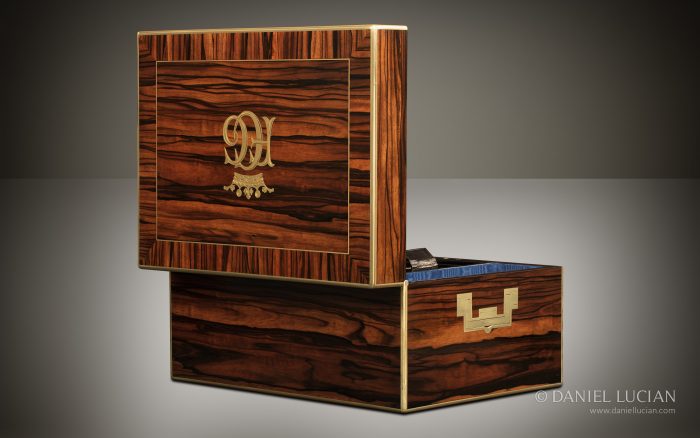
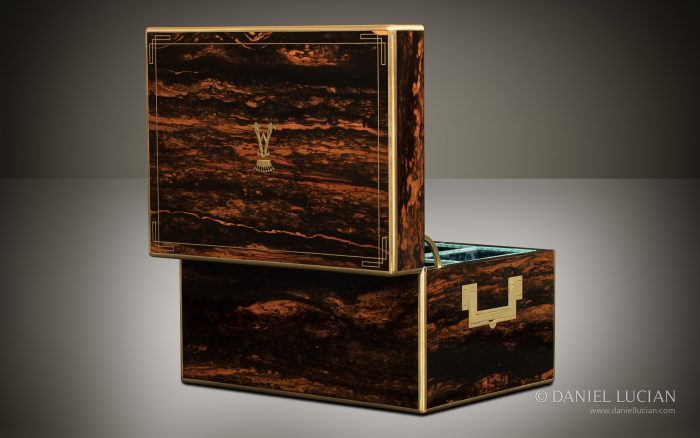
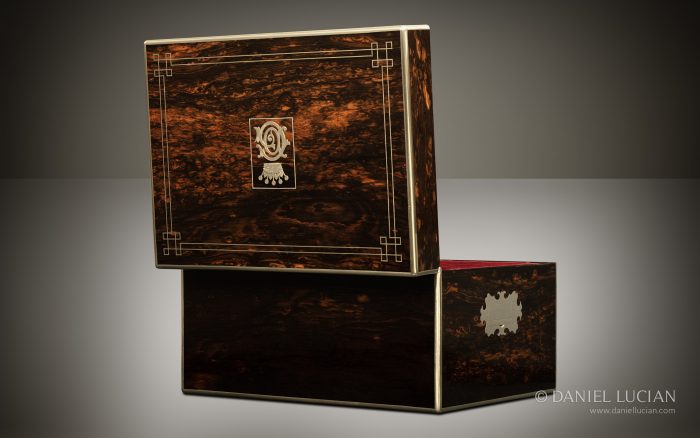
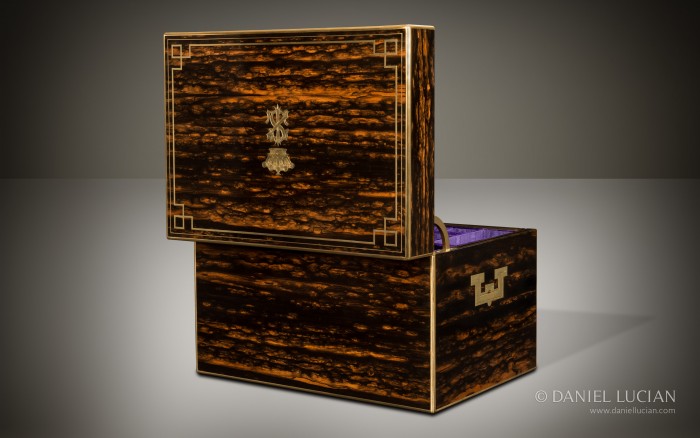
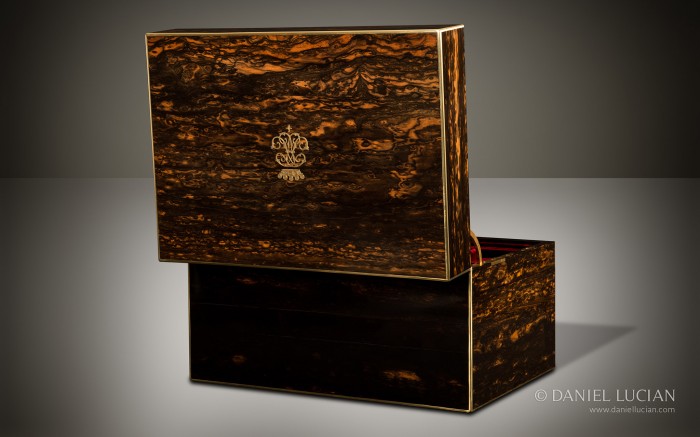
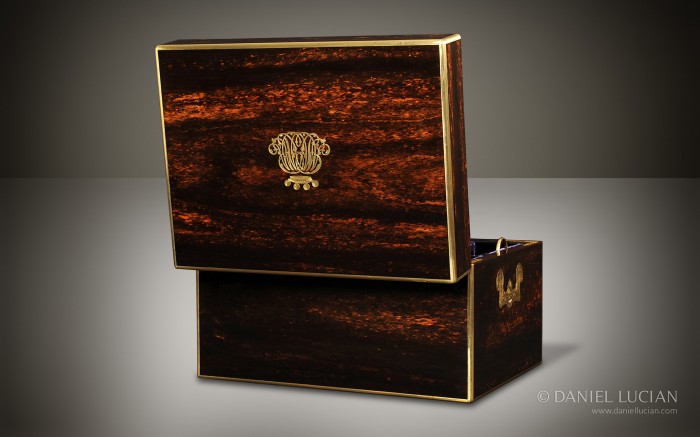
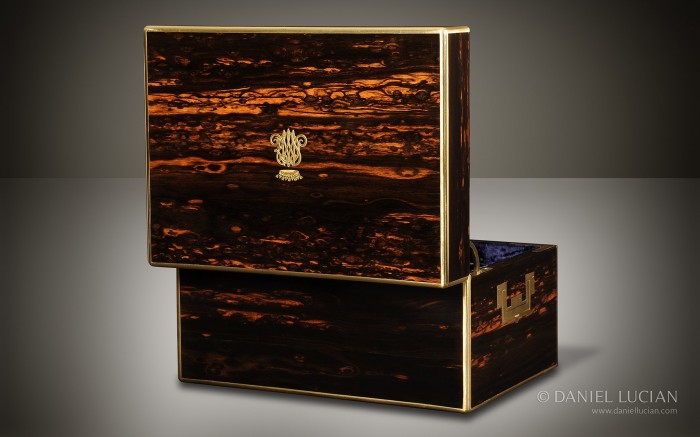
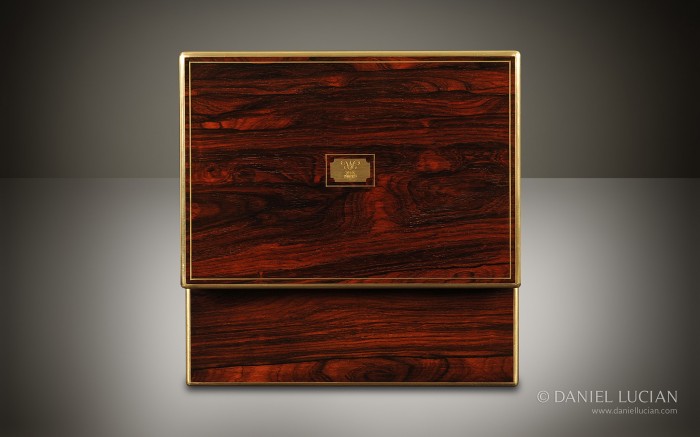
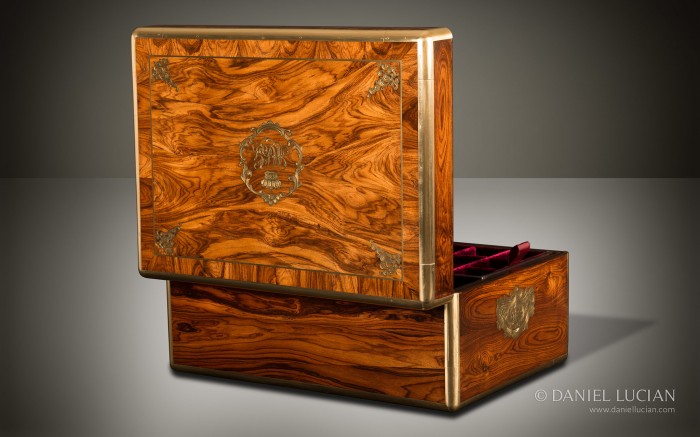
 Price On Application
Price On Application